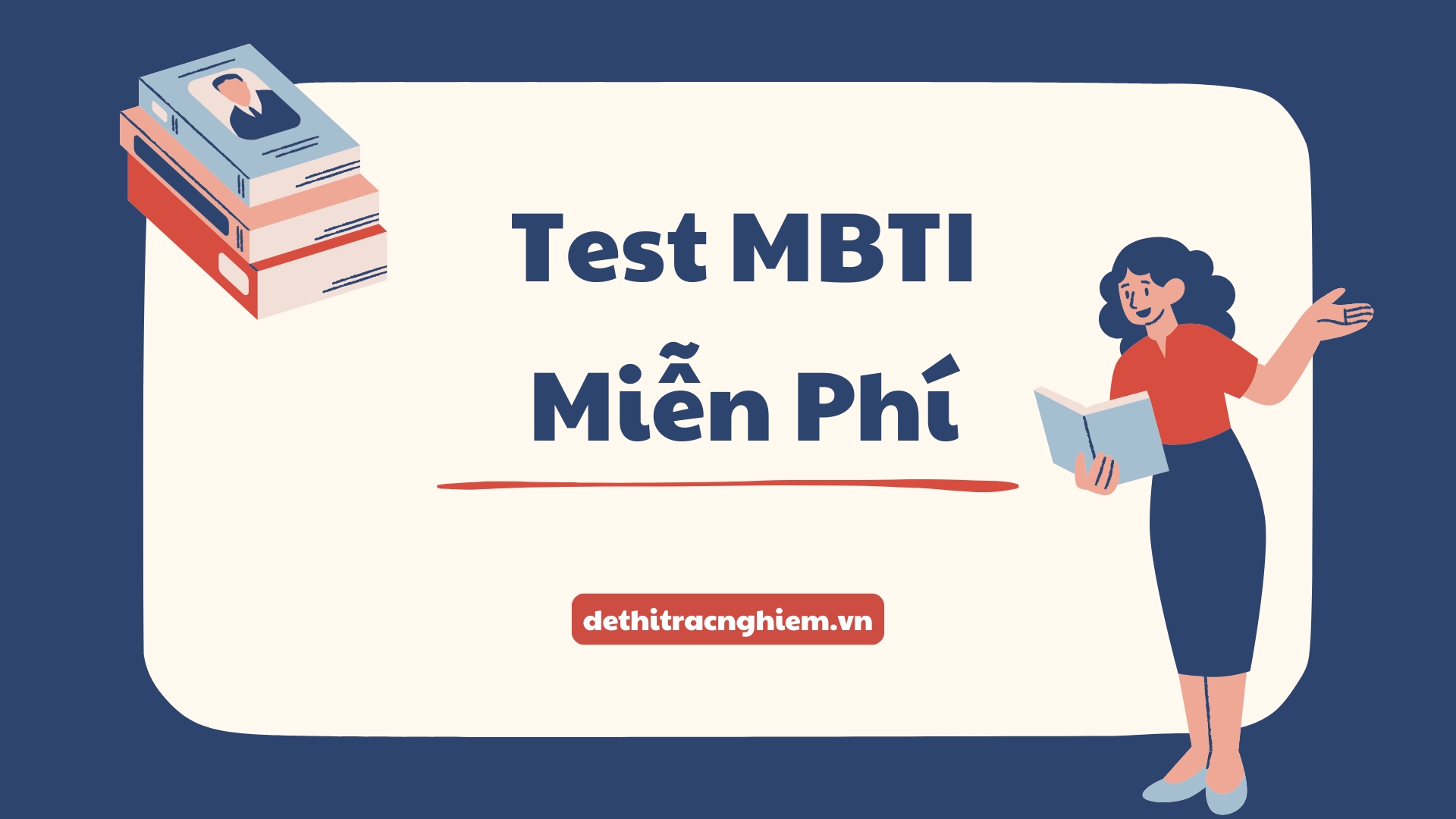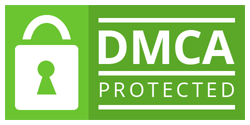Đề thi thử Đại học 2025 môn Tiếng Anh – Sở GD&ĐT Thái Nguyên (Mã đề 002) là một trong những đề tiêu biểu thuộc Tổng hợp đề thi thử môn Tiếng Anh THPT QG, nằm trong chương trình Đề thi vào Đại học. Được tổ chức bởi Sở Giáo dục và Đào tạo tỉnh Thái Nguyên, đề thi này hướng đến việc giúp học sinh lớp 12 kiểm tra năng lực, ôn tập hệ thống kiến thức trọng tâm và chuẩn bị tốt nhất cho kỳ thi tốt nghiệp THPT năm 2025.
Với mã đề 002, cấu trúc đề thi bám sát định dạng chuẩn của Bộ GD&ĐT, bao gồm đầy đủ các phần: phát âm, trọng âm, từ vựng – ngữ pháp, chức năng giao tiếp, đọc điền, đọc hiểu và viết lại câu. Những điểm kiến thức cần đặc biệt lưu ý gồm: câu điều kiện, mệnh đề quan hệ, thì của động từ, cấu trúc đảo ngữ, câu bị động, collocations và idioms. Đề thi có mức độ phân hóa hợp lý, thích hợp với nhiều đối tượng học sinh từ trung bình khá đến khá giỏi, đồng thời giúp các em nâng cao kỹ năng xử lý bài đọc hiểu và củng cố vốn từ học thuật.
Hãy cùng Dethitracnghiem.vn tìm hiểu về đề thi này và tham gia làm kiểm tra ngay lập tức!
- Số trang: 4 trang
- Hình thức: Trắc nghiệm
- Thời gian làm bài: 50 phút (không kể thời gian phát đề)
ĐỀ THI THỬ ĐẠI HỌC MÔN TIẾNG ANH NĂM 2025 SỞ GD&ĐT THÁI NGUYÊN (MÃ ĐỀ 002)
Read the following advertisement and mark the letter A, B, C or D on your answer sheet to indicate the option that best fits each of the numbered blanks from 1 to 6:
DISCOVER HEALTHY EATING
Want to eat better but don’t know where to start? Our healthy eating app (1)______ you with recipes, meal plans, and shopping lists that are easy to follow. Whether you’re (2)______ to lose weight, gain muscle, or just improve your overall well-being, we’ve got you covered. You can customize your meals based on your dietary preferences, and all our recipes (3)______ natural, whole foods. Start today and see how (4)______ a few small changes can make a big difference. Sign (5)______ for free, and gain access to hundreds of healthy recipes. Eating well has never been (6)______!
Question 1:
A. guides
B. guided
C. had guided
D. has guided
Question 2:
A. teaching
B. being
C. kissing
D. hoping
Question 3:
A. uses
B. using
C. use
D. used
Question 4:
A. exciting
B. confusing
C. easy
D. difficult
Question 5:
A. off
B. with
C. up
D. on
Question 6:
A. simple
B. simplest
C. simpler
D. more simple
Read the following leaflet and mark the letter A, B, C or D on your answer sheet to indicate the option that bestfits each of the numbered blanks from 7 to 12.
Stress Management Tips
Feeling overwhelmed? Managing stress is crucial for maintaining both mental and physical health.
Stress Facts: Did you know that over 50% of people (7)______ from high levels of stress? Chronic stress can affect your overall well-being and lead to fatigue.
Steps to Manage Stress:
Practice deep breathing! This simple technique can (8)______ calmness and lower anxiety.
Stay active! Exercise helps reduce stress by releasing endorphins and boosting (9)______ mood.
Get organized! (10)______ letting stress build up, manage your time and tasks effectively to (11)______ feeling overwhelmed.
Seek support! Talk to friends or a counselor if you’re feeling (12)______ by stress.
Question 7:
A. suffer
B. enjoy
C. recover
D. lower
Question 8:
A. protect
B. promote
C. avoid
D. decrease
Question 9:
A. overall
B. temporary
C. low
D. minimal
Question 10:
A. On account of
B. Despite
C. Instead of
D. Due to
Question 11:
A. avoid
B. beg
C. delay
D. postpone
Question 12:
A. defeated
B. distracted
C. relieved
D. relaxed
Mark the letter A, B, C or D on your answer sheet to indicate the best arrangement of utterances or sentences to make a meaningful exchange or text in each of thefollowing questions from 13 to 17.
Question 13:
a. James: Hi, Lily! I’ve been doing great, just got a new job recently.
b. Lily: Hi, James! How have you been?
c. Lily: Really? That’s awesome! What are you doing now?
A. a-b-c
B. b-a-c
C. a-c-b
D. c-b-a
Question 14:
a. Tom: That’s a wonderful idea! Have you thought about what kind of pet you want?
b. Jane: I’m thinking about adopting a pet.
c. Tom: Dogs are great companions!
d. Jane: Yes, I think they’ll fit perfectly with my lifestyle.
e. Jane: I’m leaning towards adopting a dog.
A. b-a-e-c-d
B. b-a-e-c-d.
C. a-d-c-b-e
D. a-b-d-c-e
Question 15:
Hi Alex,
a. I feel much more confident about presenting it now.
b. I hope we can work together again in the future!
c. Let me know if you’re available for another collaboration soon.
d. Thanks so much for your help with the project last week.
e. Your suggestions really improved the final outcome.
Best,
Catherine
A. d-e-a-b-c
B. a-c-b-d-e
C. d-e-a-c-b.
D. a-d-b-c-e
Question 16:
a. I usually start by writing down the most important tasks in the morning.
b. This helps me prioritize and avoid procrastination.
c. Planning ahead is key to staying organized throughout the day.
d. By doing so, I can ensure that I meet deadlines without feeling overwhelmed.
e. It’s a habit that has made me more efficient at work and in life.
A. a-b-c-d-e
B. a-d-b-c-e
C. c-a-b-d-e.
D. b-a-c-d-e
Question 17:
a. The town recently installed new solar-powered streetlights.
b. Residents have also expressed positive feedback about the brighter streets at night.
c. Overall, it’s a great step towards sustainability.
d. These lights are more energy-efficient and reduce the town’s electricity bill.
e. The local government hopes this initiative will encourage other cities to follow suit.
A. a-d-b-c-e
B. a-b-c-d-e
C. a-d-c-b-e
D. a-d-b-e-c
Read the following passage about language learning and mark the letter A, B, C, or D on your answer sheet to indicate the option that best fits each of the numbered blanks from 18 to 22.
Learning a new language can be a transformative experience, opening doors to new cultures and perspectives. (18) ______. It enhances cognitive skills and increases career opportunities. The process of acquiring a new language also helps individuals understand and appreciate the nuances of different cultures. (19) ______. This cultural insight fosters empathy and broadens one’s worldview.
One of the most significant benefits of language learning is its impact on communication. (20) ______. Language learners can connect with people from diverse backgrounds, facilitating friendships and professional relationships. This exchange of ideas enriches our lives and promotes a more inclusive society.
To succeed in language learning, consistency and practice are key. (21) ______. Engaging with native speakers, consuming media in the target language, and practicing speaking can accelerate proficiency. Language learning is not just about memorizing vocabulary; it’s about immersing oneself in the language.
Finally, sharing the knowledge gained through language learning can empower others. (22) ______. By teaching what we’ve learned, we contribute to a community of learners and foster a culture of understanding and collaboration.
Question 18:
A. Language learning is often tedious.
B. Learning a language can be beneficial.
C. Only children can learn new languages.
D. Language skills are overrated.
Question 19:
A. Understanding cultures is unnecessary.
B. Cultural knowledge can hinder communication.
C. Language learning promotes cultural understanding.
D. Culture is irrelevant to language learning.
Question 20:
A. Language learning isolates individuals.
B. Communication skills are not affected by language learning.
C. Language learning can enhance interpersonal communication.
D. Learning a language is a solitary process.
Question 21:
A. Consistent practice is essential for language learning.
B. Language learners should avoid native speakers.
C. Practicing in isolation is effective.
D. Memorizing vocabulary is the only requirement.
Question 22:
A. Sharing knowledge hinders language acquisition.
B. Teaching others can strengthen our own skills.
C. Language skills are only for personal use.
D. Only experts can share their knowledge.
Read the following passage about green living and mark the letter A, B, C, or D on your answer sheet to indicate the best answer to each of the following questions from 23 to 30
Green living refers to a lifestyle that promotes sustainability and environmental consciousness. This way of life encourages individuals to make choices that reduce their carbon footprint and conserve natural resources. Practices such as recycling, using renewable energy sources, and reducing waste are fundamental aspects of green living. By adopting these practices, individuals can contribute to the preservation of the environment and promote a healthier planet for future generations.
One significant component of green living is the use of renewable energy sources. Solar, wind, and hydroelectric power are examples of renewable energy that can replace fossil fuels. Using renewable energy reduces greenhouse gas emissions and dependence on non-renewable resources. Additionally, renewable energy sources are often more sustainable and have less impact on the environment.
Another important aspect of green living is sustainable consumption. This involves choosing products that are environmentally friendly and responsibly sourced. For example, buying locally produced food reduces the carbon footprint associated with transportation. Moreover, opting for products made from recycled materials helps conserve resources and reduce waste.
Green living also emphasizes the importance of conserving water and energy. Simple actions such as turning off lights when not in use, fixing leaks, and using energy-efficient appliances can significantly reduce energy and water consumption. These practices not only benefit the environment but also save money on utility bills.
Education and awareness play a crucial role in promoting green living. By educating individuals about the benefits of sustainable practices and how to implement them, communities can foster a culture of environmental responsibility. Awareness campaigns, workshops, and educational programs are effective ways to encourage people to adopt green living practices.
Question 23: Which of the following is NOT mentioned as a practice of green living?
A. Recycling
B. Using renewable energy
C. Reducing waste
D. Driving more
Question 24: The word “renewable” in paragraph 2 is closest in meaning to:
A. finite
B. endless
C. temporary
D. limited
Question 25: The word “them” in paragraph 5 refers to:
A. sustainable practices
B. non-renewable resources
C. renewable energy sources
D. greenhouse gas emissions
Question 26: The word “conserve” in paragraph 3 could be best replaced by:
A. save
B. waste
C. deplete
D. increase
Question 27: Which of the following best paraphrases the underlined sentence in paragraph 4?
A. Conserving water and energy is not important.
B. Simple actions can lead to significant reductions in consumption.
C. Turning off lights has no impact on energy consumption.
D. Fixing leaks is the only way to conserve water.
Question 28: Which of the following is TRUE according to the passage?
A. Renewable energy sources are less sustainable than fossil fuels.
B. Sustainable consumption involves choosing environmentally friendly products.
C. Green living does not emphasize water conservation.
D. Education has no role in promoting green living.
Question 29: In which paragraph does the writer mention the economic benefits of green living practices?
A. Paragraph 1
B. Paragraph 2
C. Paragraph 3
D. Paragraph 4
Question 30: In which paragraph does the writer explore the role of education in green living?
A. Paragraph 1
B. Paragraph 2
C. Paragraph 3
D. Paragraph 5
Read the following passage about the benefits and challenges of remote work and mark the letter A, B, C, or D on your answer sheet to indicate the best answer to each of the following questions from 31 to 40.
[I] The rise of remote work has transformed the modern workplace, offering flexibility and a better work-life balance for employees around the world (Bloom et al., 2015). [II] This trend, accelerated by technological advancements and the COVID-19 pandemic, allows employees to work from home or any location with internet access (Gajendran & Harrison, 2007). [III] While remote work provides numerous benefits, it also presents challenges that organizations and employees must address to remain productive and engaged. [IV]
One of the main benefits of remote work is increased flexibility. Employees can manage their time more effectively, which often leads to higher job satisfaction and reduced stress. Furthermore, remote work eliminates the need for daily commutes, saving time and reducing transportation expenses. Many employees report feeling more empowered to control their schedules, allowing them to better balance personal and professional responsibilities.
However, remote work also comes with significant challenges. Isolation is a common issue, as employees miss out on face-to-face interactions and team bonding, which are important for mental well-being and collaboration. Studies have shown that prolonged isolation can lead to feelings of loneliness, reducing job satisfaction and affecting mental health (Ozcelik & Barsade, 2018). Additionally, remote workers may struggle to maintain boundaries between work and personal life, leading to overwork and burnout.
To make remote work successful, companies need to implement strategies that support employee well-being and productivity. Providing tools for virtual collaboration, setting clear work-life boundaries, and encouraging regular team check-ins can help mitigate the challenges of remote work. By balancing flexibility with structured support, organizations can create a sustainable remote work environment that benefits both employers and employees (Larson & DeChurch, 2020).
(Adapted from Remote Work and Employee Well-being by Bloom, Ozcelik, and others)
Question 31: Where in paragraph I does the following sentence best fit?
Remote work has become more popular due to advancements in digital communication tools.
A. [I]
B. [II]
C. [III]
D. [IV]
Question 32: The phrase “work-life balance” in paragraph 1 could be best replaced by ______.
A. career advancement
B. professional success
C. equilibrium between work and personal life
D. job security
Question 33: The word “their” in paragraph 2 refers to ______.
A. employees
B. responsibilities
C. schedules
D. expenses
Question 34: According to paragraph 2, which of the following is NOT a benefit of remote work?
A. Increased flexibility
B. Higher transportation costs
C. Improved work-life balance
D. Reduced stress
Question 35: Which of the following best summarizes paragraph 3?
A. Remote work challenges employees with isolation and blurred boundaries, leading to potential overwork and mental health concerns.
B. The advantages of remote work significantly outweigh any challenges employees might face.
C. Isolation is easily managed by virtual collaboration tools in a remote work setting.
D. Remote work eliminates work-related stress and improves collaboration.
Question 36: The word “mitigate” in paragraph 4 is CLOSEST in meaning to ______.
A. worsen
B. intensify
C. reduce
D. acknowledge
Question 37: Which of the following is TRUE according to the passage?
A. Remote work reduces social interactions, which can lead to feelings of loneliness.
B. Daily commuting is essential for remote workers to maintain productivity.
C. Companies are not responsible for supporting remote employees’ well-being.
D. Remote work always leads to overwork and burnout.
Question 38: Which of the following best paraphrases the underlined sentence in paragraph 4?
A. Companies must avoid setting boundaries for employees’ work-life balance.
B. Employers should support remote work by providing resources and encouraging a structured environment.
C. Employees need minimal guidance from companies to manage remote work challenges.
D. Employers should prevent remote employees from accessing collaboration tools.
Question 39: Which of the following can be inferred from the passage?
A. Remote work completely eliminates the need for personal life boundaries.
B. The lack of face-to-face interaction is a minor issue in remote work.
C. Effective remote work requires a combination of flexibility and organizational support.
D. Remote work only benefits employees, not organizations.
Question 40: Which of the following best summarizes the passage?
A. Remote work offers flexibility and convenience but can cause isolation and work-life imbalance, which companies must address to ensure employee well-being.
B. Remote work requires employees to spend more time commuting to improve productivity.
C. Companies benefit from remote work as employees are more isolated and less engaged.
D. Remote work allows complete freedom for employees without any challenges.
Mục đích tổ chức kỳ thi Đại học năm 2025 là gì?
Căn cứ theo quy chế hiện hành của Bộ Giáo dục và Đào tạo và các văn bản hướng dẫn tổ chức kỳ thi Đại học năm 2025, mục đích của kỳ thi là:
– Đánh giá kết quả học tập của học sinh sau 12 năm học theo yêu cầu của chương trình giáo dục phổ thông.
– Lấy kết quả thi để xét công nhận tốt nghiệp trung học phổ thông và làm căn cứ tuyển sinh đại học, cao đẳng.
– Góp phần đánh giá chất lượng giáo dục của địa phương và cả nước, làm cơ sở điều chỉnh nội dung, phương pháp dạy học trong nhà trường.
Thí sinh thi Đại học năm 2025 có bắt buộc thi môn Tiếng Anh không?
Theo quy định hiện hành của Bộ Giáo dục và Đào tạo và hướng dẫn tổ chức kỳ thi tốt nghiệp Đại học năm 2025, thí sinh dự thi phải thực hiện như sau:
– Thi 3 môn bắt buộc: Toán, Ngữ văn và Ngoại ngữ.
– Ngoài ra, thí sinh phải chọn một trong hai bài thi tổ hợp: Khoa học Tự nhiên (gồm các môn Vật lí, Hóa học, Sinh học) hoặc Khoa học Xã hội (gồm các môn Lịch sử, Địa lí, Giáo dục công dân – dành cho học sinh học chương trình giáo dục phổ thông).
Trong số các môn thi, Tiếng Anh là một trong ba môn thuộc bài thi Ngoại ngữ bắt buộc, thí sinh phải thi môn Tiếng Anh như một môn bắt buộc, không phụ thuộc vào lựa chọn bài thi tổ hợp hay mục đích xét tuyển đại học.
Như vậy, kỳ thi Đại học năm 2025 bắt buộc thí sinh phải thi môn Tiếng Anh.




